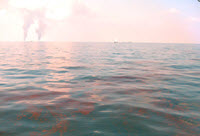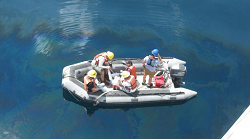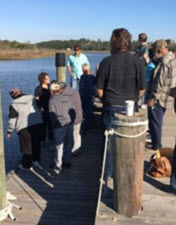Category Archives: People

Deepwater Horizon oil impacted over 1,700 km of Gulf of Mexico coastline and prompted 89 beach closures, largely due to uncertainty about health risks associated with oil contamination. Compared to adults, children spend more time in the sand when at the beach and touch their face more often, increasing potential exposure to contaminants through skin Read More

Hydrocarbons from oil slicks floating on the ocean’s surface can be aerosolized by evaporation, breaking waves and bursting bubbles. Variations in sea, wave, and atmospheric conditions can significantly influence the transport and dynamics of these aerosolized oil droplets. Accurate predictions of where and how far aerosolized oil pollutants will go can help us better understand Read More

Marine protists are single-celled planktonic creatures that form the base of the marine food web and perform important ecosystem services, including driving photosynthesis and the carbon and nitrogen cycles. Protist communities include energy-producing organisms, such as phytoplankton, that use sunlight or chemical reactions to generate their own food. Protists also include predators, such as microzooplankton, Read More

Hydrocarbon-degrading microbes living in ocean environments consumed and metabolized oil droplets following Deepwater Horizon, which significantly influenced the oil’s fate in the Gulf of Mexico. The ocean has layers of varying densities resulting from temperature or salinity gradients that can affect the motion of oil droplets and swimming microbes. Understanding the hydrodynamics of droplets and Read More
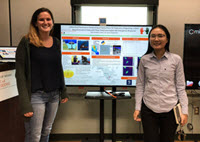
Oil spilled in the ocean can sink to the seafloor due to its high density or by attaching to floating particulate matter, as happened during the Marine Oil Snow Sedimentation and Flocculent Accumulation (MOSSFA) event following Deepwater Horizon. Oil that reaches the seafloor can smother benthic organisms or the organisms can ingest it, causing long-term Read More
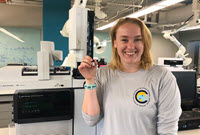
Marine ecosystems provide many valuable resources for humans, including seafood and petroleum. Conservation policies that protect marine ecosystems, especially pollution and petroleum-related policies, depend on accurate scientific data about the ways different marine species experience pollution. Madison Schwaab quantifies levels of toxic oil compounds in the bile and tissues (liver, muscle, and gonad) of fifteen Read More
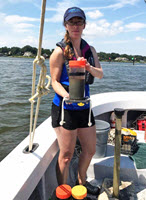
Oil that enters a marine environment can attach to particulate matter suspended in the water and form oil particle aggregates, which then sink to the seafloor. Some oil particle aggregates are created when microbial excretions cause particulate matter and oil to cluster and bind together, forming Marine Oil Snow or MOS. Others result when fine Read More

Coral reefs provide food, shelter, and habitat to thousands of organisms living in the Gulf of Mexico. However, their vulnerability to physical and toxicological damage increases corals’ risk during environmental disturbances, particularly in shallow water where dangers from coastline proximity include wastewater pollution, moving sediment, salinity and nutrient changes, scavengers, and boating and fishing activities. Read More

The microbial community living in fish’s gastrointestinal tracts, also called the gut microbiome, are vital to their developing immune systems and can influence behaviors such as foraging. Studies conducted following Deepwater Horizon observed that crude oil exposure can shift the gut microbiome’s community structure to favor microbes that can degrade toxic oil chemicals. Determining if Read More
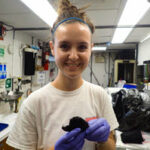
The ocean’s deep-pelagic ecosystem is the largest and least understood habitat on Earth. In the Gulf of Mexico, it was the largest ecosystem affected by the Deepwater Horizon incident. Because there was very limited pre-spill data about deep-pelagic organisms’ biodiversity, abundance, and distribution, it is difficult to determine how oiling may have affected different deep-sea Read More

Following the Deepwater Horizon oil spill, resource managers recognized the need for species-specific fish risk assessments to help identify which organisms and habitats would be most affected. However, because many marine species lack toxicological data needed for such assessments, researchers suggested an alternate way to help prioritize species with potentially higher sensitivity or risk to Read More
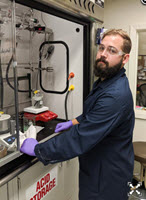
Because oil and water don’t mix easily, oil droplets in the ocean environment tend to aggregate into larger masses, which hinders microbial degradation. Chemical dispersants used for oil spill response contain water-soluble and oil-soluble components that adhere to oil droplets and increase the oil and water’s compatibility, allowing oil to disperse more easily into the Read More

When a marine oil spill occurs, it is vital to quickly determine where and when to dispatch response operations. Visualization and remote sensing techniques help locate oil on surface waters but have limitations in locating subsurface oil, such as oil that lingers in the water column or settles to the bottom. During Deepwater Horizon, researchers Read More
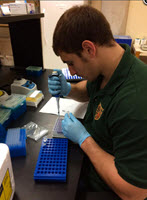
Following Deepwater Horizon, there was concern about how the oil spill might affect marine life. Since then, scientists have learned more about how polycyclic aromatic hydrocarbons (PAHs) affect marine organisms, especially commercially and recreationally important fisheries. For example, they found that that exposure to PAHs during a fish’s early life stages (embryo and larvae) can Read More

The Deepwater Horizon incident affected more than 1,700 km of Gulf of Mexico coastline. Chemical compounds from the oil spill posed a risk to human health, especially children whose play behaviors often bring them in direct contact with sand and water. To better understand these risks, researchers are quantifying how children play at the beach Read More
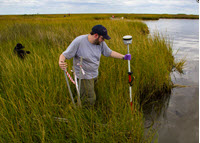
Shearing typically occurs along coastal marshes when strong storms rip away the plants at the marsh edge. Because oiled shoreline sediment is in a weakened state and less able to securely hold plants in place, some Louisiana marshes that were heavily oiled following Deepwater Horizon are experiencing more shearing than usual. The loss of vegetation Read More
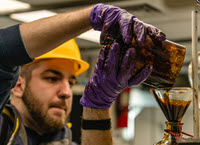
Scientists can use radium isotopes, which are released from oil in seawater and decay at a specific rate, as geochemical tracers to investigate marine processes involved in oil degradation. Matthew Kurpiel is investigating how radium isotopes in surface oil slicks and underwater oil plumes release into the surrounding seawater over time. His findings will help Read More
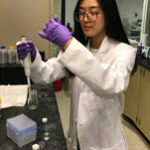
Oil-water interfaces, such as those formed by marine oil spills or natural ocean oil seeps, are teeming with bacterial activity. Some bacterial species in those interfaces form biofilms that help break up oil, which enhances biodegradation. The interfaces themselves can also significantly influence how bacteria behave, often trapping them or altering their natural movements. Jiayi Read More
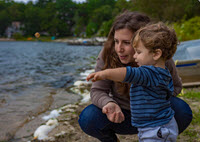
Predicting where oil will go can be one of the most challenging aspects of marine oil spill response. Following Deepwater Horizon, research showed that strong currents capable of transporting oil often appear along ocean fronts (the interface between river like-water masses that have different temperatures, salinities, or densities). However, our limited understanding about ocean front Read More
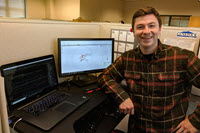
Meiofauna are microscopic marine organisms that live between grains of sand in ocean, coastal, river, and stream sediments and provide important services such as recycling organic material in the sediment that contribute to healthy marine ecosystems. Additionally, meiofauna are intermediary consumers between microbes and prey of larger organisms in marine food webs, and as such, Read More
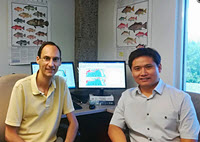
Authorities closed large portions of the Gulf of Mexico following Deepwater Horizon to minimize oil contamination of fish and seafood products. Changes in commercial and recreational fisher behavior during the closure may have caused biases in the 2010 fisheries data used to assess fish populations and establish annual quotas and catch limits. Xuetao Lu is Read More
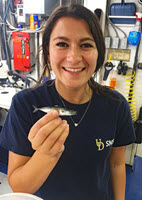
The Deepwater Horizon oil spill overlapped with the spawning activities of many ecologically and economically important tuna species. However, the significant knowledge gap regarding early life stage tuna taxonomy and distribution makes it difficult to understand how the spill may have affected them. As a graduate student, Nina Pruzinsky examined the abundance, distribution, and morphological Read More
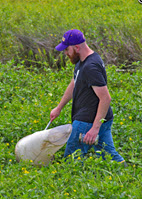
Estuarine marshes in coastal Louisiana face numerous threats such as sea-level rise, salt water intrusion, and contamination threats such as oil spills that can lead to marsh loss and changing habitats. Ben Aker collects insects from different habitats within coastal marshes and assesses their abundance and biodiversity. His research will help identify potential marsh health Read More
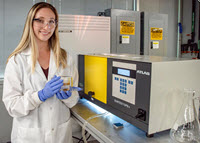
When an oil slick is exposed to sunlight, photo-oxidation processes break the oil down and incorporate oxygen into the petroleum molecules. When the incorporated oxygen reaches a certain amount, the petroleum can dissolve in water and potentially affect marine organisms and ecosystems. Sydney Niles is investigating how photo-oxidation alters the oil’s molecular composition and if Read More
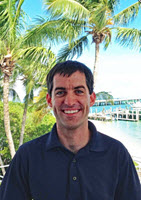
Our knowledge about ocean transport comes primarily from ocean circulation models that use field observations and theoretical motion equations to simulate ocean dynamics. Ocean models can depict large-scale circulation features accurately, but resolutions high enough to capture all scales of motion entail significant computational time and cost and are challenging or even impossible for most Read More

There are currently over 30 active deep-sea drilling platforms and more than 600 areas where oil naturally seeps from the Gulf of Mexico seafloor. A massive microbial response coincided with the Deepwater Horizon subsurface oil plume, leading researchers to question how pressure may have impacted the hydrocarbon degraders. Kelli Mullane is investigating how high-pressure and Read More

Following Deepwater Horizon, researchers have been conducting multi-year studies on the health of Gulf of Mexico marine life. As part of this effort, Lindsay Jasperse recently studied how marsh fish respond to combined oil exposure and environmental stressors and is currently investigating the immune systems of oil-exposed bottlenose dolphins. Lindsay is a Ph.D. student with Read More
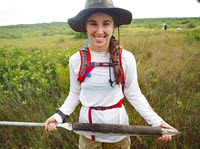
Petroleum hydrocarbons buried in sandy beaches are protected from tides and UV light and, thus, may persist longer in the environment than oil on the beach surface. As a graduate student, Ioana Bociu’s research focused on determining the degradation rates for large sediment-oil clusters buried in Florida beaches following Deepwater Horizon. Her findings will help Read More

Many ocean forecast models treat the upper 1 meter of the water column, which plays a central role in ocean material transport, as a single layer. However, recent research shows that currents act differently at various depths within this meter. The use of ocean drifters is the oldest way to measure currents, and recent design Read More
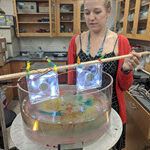
Ocean models that utilize surface drifter data can provide oil spill responders with important information about the floating oil’s direction and speed as it moves along the ocean surface. However, surface drifters, like the floating material they represent, tend to cluster along strong fronts and eddies. This clustering can result in important consequences for surface Read More
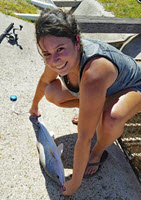
Many fish that were exposed to Deepwater Horizon oil survived; however, they may have experienced later-in-life impacts that affected their ability to survive longer than fish that did not experience oil exposure. Alexis Khursigara investigates if oil-induced latent effects in red drum (Sciaenops ocellatus) alters behavior, particularly the ability to learn and compete with other Read More
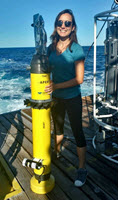
During the Deepwater Horizon incident, some models predicted that oil would reach the Florida coastline. However, much of the oil became trapped in cyclonic-like currents, which are eddy flows associated with the Loop Current, and exited the Gulf of Mexico without reaching the Florida coast. To improve model representations of the Loop Current, Luna Hiron Read More
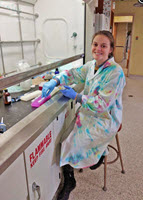
Phytoplankton and bacteria in the northern Gulf of Mexico interact closely at the food web base and provide vital food and nutrients to marine life at higher trophic levels. During the Deepwater Horizon incident, these pervasive organisms played an important role in oil bioremediation before and after the application of chemical dispersants, which broke up Read More

Oil, gases, and bubbles jet out together during a deep-ocean petroleum blowout, and the oil quickly breaks up into different-sized droplets. Predicting the sizes of these droplets is critical to determine how long it will take the oil to reach the ocean’s surface and the resulting oil slick’s size. Aditya Aiyer is developing a new Read More

When the Deepwater Horizon incident occurred, not much was known about how conditions in the deep sea would affect oil biodegradation. Juan Viamonte uses high-pressure reactors that simulate conditions at depth to observe microbial degradation and help predict what might happen should another deep-ocean oil spill occur. Juan is a Ph.D. student with the Hamburg Read More

Following the Deepwater Horizon incident, the National Center for Disaster Preparedness surveyed households in highly-affected areas of Louisiana to track the event’s impacts on the physical and social health of coastal families and their communities. Kathryn Keating facilitates subsequent surveys to assess long-term impacts and identify attributes of children and families that are associated with Read More
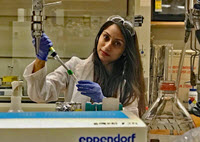
Petroleum hydrocarbons released by oil spills can accumulate on beaches and in nearshore sediments, potentially creating health risks for humans and coastal organisms. However, the highly variable conditions of beach environments make it difficult to determine the long-term behavior and fate of hydrocarbons in sands and sediment. Smruthi Karthikeyan combines bioinformatics and oil degradation data Read More
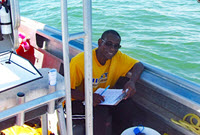
Oil spill material that enters the water column may adhere to resuspended seafloor sediments and be transported to other areas. Stephan O’Brien is investigating how physical factors, such as wind and waves, affect the suspension and subsequent transport of sediments in the Mississippi Sound and Bight. “Inorganic matter such as sediment is one of the Read More
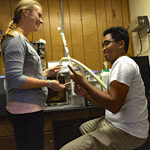
Oil is a complex mixture of chemicals with different degradation behaviors and toxicity levels. Understanding how the compounds in spilled oil, particularly toxic compounds, change with weathering is important to predicting oil’s persistence in the environment. Meredith Evans Seeley analyzed how oil compounds are preserved or removed over time in coastal systems that have different Read More
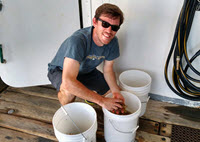
The deep-pelagic habitat (200 m depth to just above the seabed) is the largest habitat in the Gulf of Mexico, yet we know very little about it compared to coastal and shallow-water habitats. Our limited understanding of this major marine habitat makes it extremely difficult to assess the effects of disturbances such as the Deepwater Read More

Laboratory studies at the University of Miami suggest that exposure to Deepwater Horizon oil may have negatively affected heart function in mahi-mahi, reducing their ability to swim efficiently. Lela Schlenker is expanding that research to investigate if and how oil exposure alters the way mahi-mahi migrate and respond to predators and prey in the wild. Read More
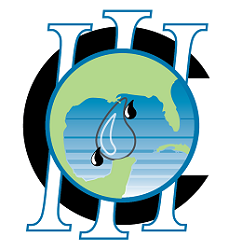
In honor of Teacher Appreciation Week, the consortium highlighted the efforts of Gulf Coast teachers who have accompanied Mud & Blood expeditions, gaining hands-on experience dissecting fish and processing sediment cores. Learn more about the Teacher @ Sea program here. Blogs written by current and previous teachers in the program can be found here on Read More
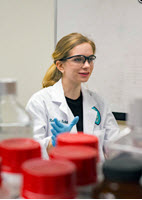
Oil contains thousands of different compounds that each affect the environment and living organisms differently. While some compounds have been well-studied, there are exponentially more that have not. Rebecca Lichtler conducts toxicity, gene expression, and gene mutation studies on oil-exposed mammal cells to determine if and how different oil compounds affect cell health. Rebecca is Read More
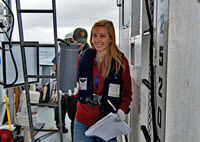
Responders to the Deepwater Horizon incident applied unprecedented amounts of chemical dispersant on the surface oil slick and into the deep underwater plume forming from the riser pipe. Shortly thereafter, researchers observed that a brown flocculant material containing oil and dispersant components covered some deep-sea corals near the incident site. Danielle DeLeo, during her graduate Read More
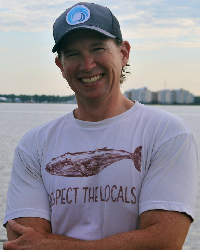
Balmer leads the Coastal Dolphin Health Assessment component of the Consortium for Advanced Research on Marine Mammal Health Assessment (CARMMHA). His group collects baseline health data on northern Gulf of Mexico dolphins, assesses potential Deepwater Horizon oil impacts, and tracks dolphins’ movement patterns using satellite tagging. Learn more about Balmer and his research here.
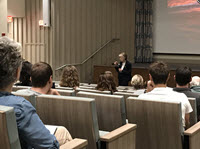
“I was not going to be stopped,” said Dr. Rita Colwell describing how she faced hurdles, many related to being a woman during her 60+ year science career, and blazed paths, including her being the first female director of the National Science Foundation. She spoke earnestly and enthusiastically to faculty, staff, and students gathered for Read More
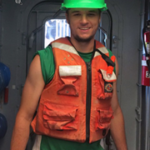
Natural seeps are abundant in the Gulf of Mexico and help create a chemically unique habitat where microbial populations can flourish. Andy Montgomery is researching the relationship between marine microbes and ocean chemistry and how chemical shifts affect the role microorganisms play in biogeochemical cycling, a common pathway for chemicals and organic matter to move Read More
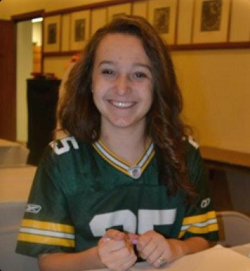
Kendall is an oceanography Ph.D. student at Louisiana State University and a researchers with the Coastal Waters Consortium (CWC). She is in the early stages of her research investigating the transport of suspended sediment in coastal Louisiana. Get to know more about Kendall, her background, and her Barataria Bay research here.

Nikaela Flournoy’s scientific journey has always carried a societal tie, from her passion for research’s social relevance to her realizations about the relationship between society and STEM (science, technology, engineering, and math). Though she is excited to see a greater emphasis on STEM in primary and secondary education, she hopes to help expand STEM awareness Read More

The Deepwater Horizon incident occurred at 1500 m depth, where the pressure is approximately 15 MPa, but little is known about how such high pressure affects the metabolic processes involved with oil biodegradation for bacteria that live there. Steffen Hackbusch conducts laboratory experiments that incubate microbes collected from deep-sea Gulf of Mexico sediment in seawater Read More
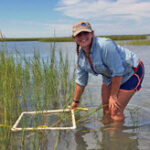
Major disturbances such as oil spills can significantly affect populations of vulnerable saltmarsh species, which may result in greater impacts to the overall saltmarsh food web. Shelby Ziegler believes that a better understanding of what saltmarsh predator-prey interactions look like today can help identify changes in the food web following disturbances in the future. “If Read More

Dr. Shivarudrappa is a Coastal Waters Consortium (CWC) researcher who examines the taxonomic identification of benthic invertebrate fauna to assess how the 2010 Deepwater Horizon oil spill impacted their community. Learn more about his research and scientific journey here.
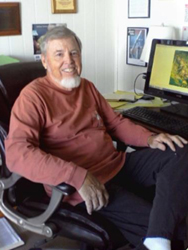
Carter is a Coastal Waters Consortium (CWC) researchers and the chief scientist for the National Center for Airborne Laser Mapping (NCALM), where he collects research-quality airborne lidar, digital photography, and hyperspectral observations for researchers. Learn more about his background and research here!

Researchers believe that large numbers of deep-diving marine mammals were living near the Deepwater Horizon site during the 2010 spill and may have experienced changes in their population distribution and abundance. Kendal Leftwich conducts acoustic research assessing how northern Gulf of Mexico dolphin populations changed and recovered over time to help researchers better understand the Read More
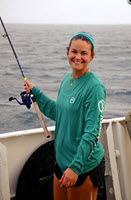
Responders to the 2010 Deepwater Horizon incident sought to reduce the amount of shoreline oiling by diverting an increased amount of Mississippi River outflow into the Gulf of Mexico. The Army Corps of Engineers opened the Bonnet Carré Spillway in 2016, which diverted Mississippi River water into the Mississippi Sound, to relieve pressure on the Read More
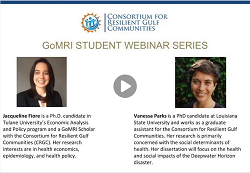
Graduate students Jacqueline Fiore and Vanessa Parks recently discussed their graduate school experiences and working on a transdisciplinary research team in a recent webinar for the Student Spotlight Series. Watch the webinar here.
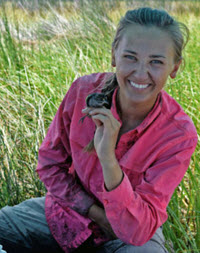
Seaside Sparrows live and forage in coastal Gulf of Mexico marshlands, some of which were oiled following the Deepwater Horizon incident. Sparrows in these oiled marshes likely ingested invertebrates that were also exposed to oil. Allison Snider uses DNA analyses to investigate potential long-term changes in the diets of Seaside Sparrows following Deepwater Horizon. She hopes that her findings will Read More
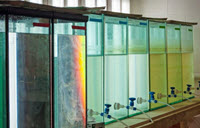
Crude oil contains tens of thousands of hydrocarbons, including polycyclic aromatic hydrocarbons (PAHs) that create unique chemical fingerprints for different types of oil. Dawei “David” Shi uses geochemical analysis techniques in mesocosm studies to track these fingerprints, observe how they change over time, and investigate how dispersant affects PAH concentrations in the water column. David Read More
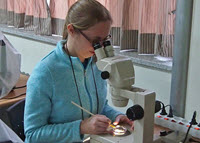
Meiofauna provide important ecosystem services such as waste removal to the deep sea-floor environment and can act as indicators of ecosystem health. Because meiofauna live a largely sedentary life due to their small size and sediment habitat, they are often unable to escape an area affected by unusual disturbances, such as the Deepwater Horizon incident. Melissa Rohal is Read More

Laser light and high-speed cameras can help researchers observe the behavior of oil droplets within a laboratory-simulated oil plume and interpret how the oil subsequently may move through the water column. Xinzhi Xue uses lasers to non-invasively probe inside the oil plume and get a detailed look at the oil fragmentation process. “This knowledge is crucial Read More
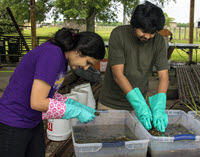
Greenhead horse fly larvae are the top invertebrate predator in the Spartinamarshes along the Gulf of Mexico coastline. Adult and larval horseflies exhibited reduced genetic variation and population declines in oiled marshes after the Deepwater Horizon oil spill, which suggests that these organisms could be an indicator species for post-spill marsh health. Devika Bhalerao uses DNA analyses to identify organisms Read More

Dr. Sunshine Van Bael, principal investigator of the RFP-V project Chemical Evolution and Plant-Microbe Degradation of Petroleum in Saline Marsh Plants and Soil, and her colleagues recently hosted a series of workshops in Louisiana for nearly 140 elementary and middle school-aged kids. The workshops were part of Dr. Van Bael’s outreach efforts to teach students Read More
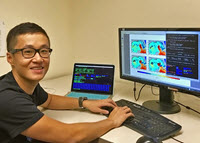
Researchers use numerical models to simulate oil spill scenarios and predict where oil will go, but the many factors that affect the oil’s path create uncertainty in the predictions. Shitao Wang quantifies the uncertainty of ocean models to gauge the reliability of oil fate predictions. “It’s like a weather prediction. Instead of saying whether or not it Read More

Megha Patel is a social work Ph.D. student at Tulane University and a member of the Consortium for Resilient Gulf Communities (CRGC)’s Community Action Planning and Resilience Building efforts. Learn more about her background and research interests here.
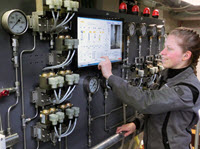
The 2010 Deepwater Horizon incident highlighted new challenges and science gaps in our understanding of and ability to respond to deep-water oil releases. Of particular importance is how highly pressurized oil and gas behaves in a deep-sea environment. Karen Malone uses her engineering background to build high-pressure tanks that replicate deep-sea conditions in a laboratory Read More

Mariotti is a geobiologist developing a model to predict the rate at which marshes retreat due to waves and pond formation. His research with the Coastal Waters Consortium (CWC) will help predict future marsh loss and identify strategies to reduce it. Learn more about his background and research here!
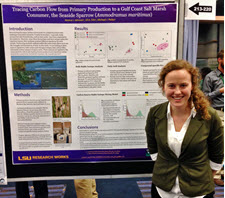
Salt marshes support commercially and culturally important species and are often subject to natural and human-caused stressors. Gaps in our knowledge of salt marsh food webs made management and restoration decisions difficult after the Deepwater Horizon spill. Jessica Johnson helps fill this gap using novel chemical analysis techniques to describe the diets of salt marsh organisms and trace how Read More

Campers aged 11-14 explored ocean topics such as deep oceans, ecosystems, and chemosynthetic processes through hands-on projects, games, videos, and slideshows. The students also designed and built their own remotely operated vehicles (ROVs) and created stop-motion videos based on the camp’s themes. View the campers’ ROVs. Watch their stop-motion films. See photos from the camp. Read More

A person’s socioeconomic position can influence their health and well-being, and disasters can place additional strain on those whose health and well-being are already compromised. Vanessa Parks compiles and analyzes data on Gulf Coast communities that explores how the Deepwater Horizon oil spill affected mental and physical health and how social factors contributed to post-disaster health outcomes. “I Read More

Since 2011, LUMCON has been host to groups of undergraduate students taking part in the Research Experience for Undergraduates (REU) Program. The REU Program helps student interns interested in scientific careers gain experience conducting research in the field. CWC will profile these students and their research through a series of blog and social media posts. Read More
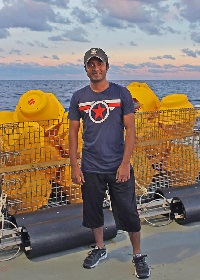
Environmental stressors can cause changes in the abundance and location of certain marine mammal species, which can affect future populations. Researchers can track marine mammals using the number of vocalizations or clicks picked up by acoustic monitoring systems, which can provide insights into their recovery from environmental stressors and, more broadly, deep-water ecosystem health. Sakib Read More
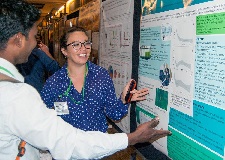
Marine oil snow is the largest commuter of carbon to the seafloor and occurs when oil and marine particles aggregate and sink through the water column. Previous studies show that oil and dispersant significantly increased marine microorganisms’ production of exopolymeric substances (EPS), an extremely sticky goo that holds marine snow together. Maya Morales-McDevitt conducts mesocosm experiments investigating how certain Read More

Betsy is a masters student at Tulane University’s Disaster Resilience Leadership Academy. She is also the program coordinator of Internships and Experiential Learning at the Newcomb College Institute, where she manages grants and endowments and oversees experiential learning opportunities, the alumnae-mentoring program, and the Kenya summer abroad program. Learn more about Betsy here.
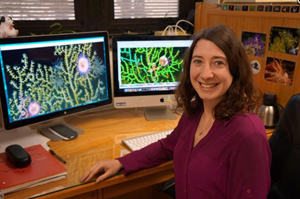
Deep-sea corals are important organisms that support a healthy and diverse deep-sea ecosystem. However, there is much we do not know about certain coral species, including how they grow, reproduce, or interact with other organisms. Fanny Girard’s research helps bridge that knowledge gap through her work on how disturbances such as oil spills affect deep-sea Read More
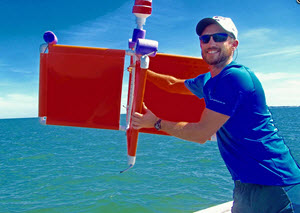
When Deepwater Horizon oil approached coastal environments, it was unclear how river water entering the Gulf of Mexico would affect the oil’s transport and fate. Steve Dykstra uses drifters and ship-deployed sensors to study how freshwater plumes disperse in the coastal environment over different seafloor topography. He plans to someday use his findings and experience Read More
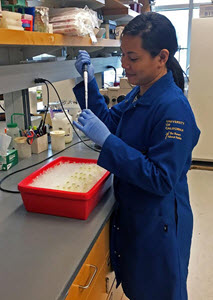
Polycyclic aromatic hydrocarbons (PAHs) can disrupt important signaling pathways that transcribe genes during fish’s early embryonic development, which could cause malformations. Graciel Diamante is conducting laboratory experiments with fish embryos to understand how weathered PAHs affect fish development. She is also finding that her work demonstrates the importance of perseverance, giving back, and collaborating within Read More
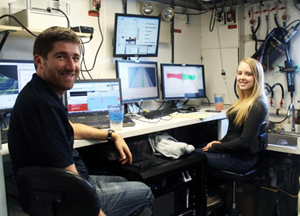
Oil droplets can attach to tiny sediment particles suspended in the water column, causing them to sink to the seafloor where they can linger for a long time. Sediment grain size influences if and how oil droplets are resuspended into the water column. Larger particles sink faster and are more difficult to resuspend in the Read More

When oil from the Deepwater Horizon spill began approaching land, one proposed response was to divert Mississippi River water and sediment into the marshes to try and push surface oil more towards the Louisiana-Texas shelf. Linlin Cui is investigating the impacts of Mississippi River diversions on Barataria Bay hydrodynamics to help inform how future oil Read More
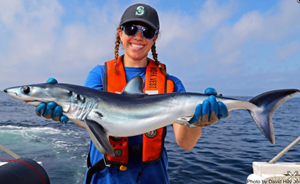
Major environmental disturbances such as oil spills can alter a marine ecosystem’s structure and even cause species losses or additions in impacted areas – changes which may have long-term consequences for an ecosystem’s functions. Emily Seubert investigates the diets of marine predators in the northern Gulf of Mexico food web to better understand how the Read More

Studies that investigate the effects of oil exposure on developing fish are typically conducted at otherwise non-stressful ambient conditions, which may result in conservative impact estimates. Christina Pasparakis is studying the combined effects of oil exposure and other environmental stressors to create a more comprehensive assessment of Deepwater Horizon impacts. Christina is a marine science Read More
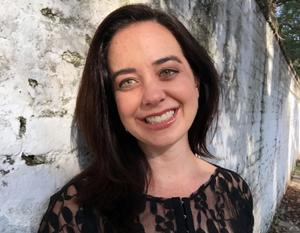
Natural and manmade disasters often involve long-term effects, but the majority of follow-up research tends to focus on the biophysical impacts rather than the social. Jacqueline Fiore, a Louisiana resident, understands how disasters such as hurricanes and oil spills can impact local industries, citizens, and ecosystems. Jacqueline, a Ph.D. student in Tulane University’s Economic Analysis Read More
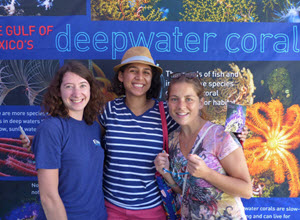
Scientists and education staff have tapped into a novel venue – football games – to reach new audiences and share ongoing research and ocean technology. The research consortium Ecosystem Impacts of Oil and Gas Inputs to the Gulf II (ECOGIG II), funded by the Gulf of Mexico Research Initiative (GoMRI), took their mobile Ocean Discovery Read More

There are hundreds of deep-pelagic fish species in the Gulf of Mexico, but we know very little about their taxonomy, diversity, and population sizes. Max Weber plans to catch fifteen individual specimens of each of the 500 known deep-sea Gulf fish species to help us better understand these organisms and how the Deepwater Horizon oil Read More
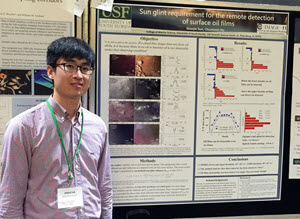
Those who have ever photographed the ocean on a sunny day have likely noticed how the reflected sunlight made the water gleam, often distorting the image. Shaojie Sun has quantified this phenomenon, called “sun glint,” to help address a longstanding limitation in scientists’ ability to assess oil seeps and spills using satellite imagery. Shaojie is Read More
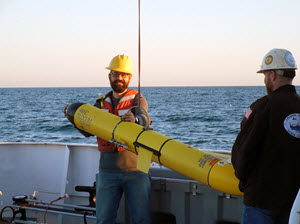
Microscopic organisms called plankton, an important component of the marine food web, congregate in the freshwater-laden coastal waters of the northern Gulf of Mexico. Adam Boyette wants to learn more about how and where these plankton live to better understand how an oil spill or other disaster might impact their populations. He is collaborating with Read More

Consortium for Advanced Research on Transport of Hydrocarbon in the Environment (CARTHE) teamed up with Project Give Kids (PGkids) to expose a bright group of foster kids, ranging in age from 1st grade to high school, to the amazing world of marine science. The students started the day with CARTHE outreach manager, Laura Bracken, who Read More
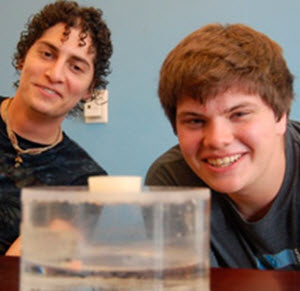
Cameron Jackson, a sophomore, is studying marine biology Texas A&M University at Galveston (TAMUG) and Oscar Agueda is a senior who will be getting his degree in marine science (TAMUG); both students are minoring in chemistry. When asked about career aspirations they stated that they hoped to go on to graduate school. “I want to Read More

The Dispersion Research on Oil: Physics and Plankton Studies (DROPPS) Consortium had another successful collaboration with the Consortium for Advanced Research on Transport of Hydrocarbon in the Environment (CARTHE) for the UT Summer Science program! We taught 3rd-4th graders about how oil spill scientists sometimes use drift cards to study oil spills to see where Read More

Two postdocs, Ali Deary and Adam Greer, took turns as Chief Scientist aboard the R/V Point Sur during the Consortium for oil spill exposure pathways in Coastal River-Dominated Ecosystems (CONCORDE)’s recent Spring Campaign, while three others—Kemal Cambazoglu, Sabrina Parra, and Inia Soto-Ramos—devised the cruise plan for the R/V Pelican. Earlier in the year PhD student Read More

Christia Hewlett was the official Teacher-At-Sea during the consortium’s most recent research cruise. She documented the equipment, experiences, and even the researchers on board for the DEEPEND blog. You can find all of her posts about the cruise here. “I hope that I will be able to take back what I have learned and share Read More
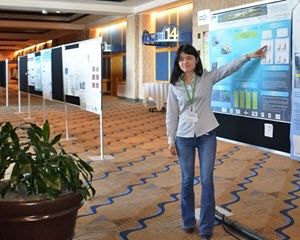
When disaster strikes, responders look at how creatures in its path may be impacted to mitigate damage. Tingting Tang takes the process one step further, using mathematical models to predict how long recovery may take. The creatures that Tingting focuses on are some of the Gulf of Mexico’s largest predators and most charismatic animals, beaked Read More

The first three years of Coastal Waters Consortium (CWC-I) began September 2011 and ended December 2015. The second three years of Costal Waters Consortium (CWC-II) began January 1, 2015 and extends until the end of December 2017. Meet some of the many researchers up-close and personal in the following links: CWC-I Scientist Spotlights CWC-II Scients Read More
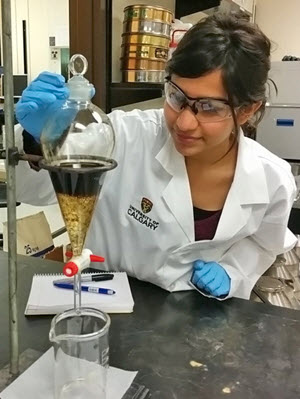
As a child in India, Aprami Jaggi witnessed firsthand how polluted water sources impact society. Her desire to make water remediation her life’s work has led her from Delhi to Calgary, Canada, to study oil mitigation. There she combines geochemistry and geophysics to hunt for scientific answers and practical solutions to the worldwide water pollution Read More
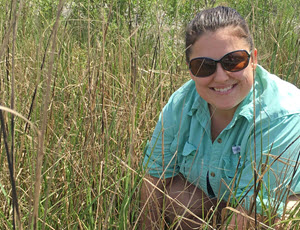
Elizabeth Robinson studies blue crab’s role in the northern Gulf of Mexico food web, looking closely at how Deepwater Horizon oil might have affected the natural predator-prey balance. Many people who hear the phrase ‘marine life’ typically think first about big ocean animals like whales and dolphins. Elizabeth explained why smaller marine animals – like Read More

